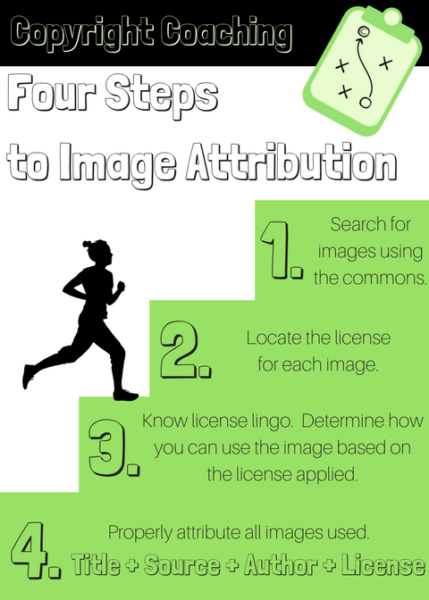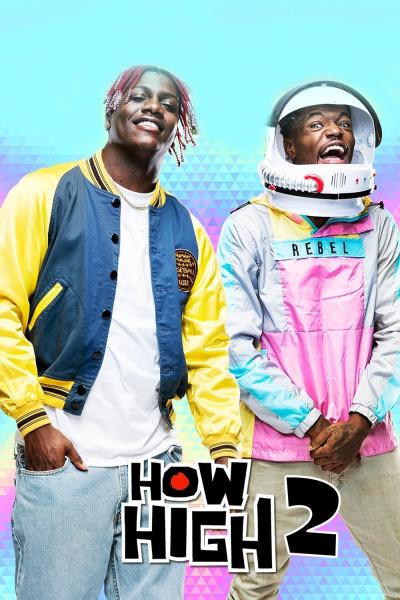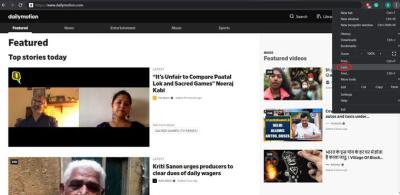Welcome to the vibrant world of iStock Photos! If you're a creative professional or simply someone who loves visuals, you've likely stumbled upon iStock, one of the leading platforms for high-quality stock images. Founded in 2000, this platform boasts millions of photos, illustrations, and videos that cater to every need—whether it's for marketing, personal projects, or education. But, with great resources come great responsibilities. Understanding the attribution rules associated with
What is Attribution and Why is it Important?
Attribution is the practice of giving proper credit to the original creator of a work when you use their content. In the realm of iStock Photos and similar platforms, this means acknowledging the photographers, illustrators, and videographers whose works you incorporate into your projects. So, why should you care about attribution? Let's explore a few key reasons!
- Legal Compliance: Using images without proper attribution can lead to legal trouble. Many stock platforms, including iStock, have specific licensing agreements that stipulate how and when you must attribute their content. Ignoring these rules can result in fines or legal challenges.
- Ethical Responsibility: Creators pour their time and talent into crafting stunning visuals. Giving proper credit is not just a formality; it's a way to respect and recognize their hard work. Ethical practices in content usage foster a healthier creative community.
- Professional Image: If you're using images in a professional setting—be it a blog, website, or marketing materials—providing attribution enhances your credibility. Clients and audiences appreciate transparency and are more likely to trust sources that honor creators' rights.
Additionally, understanding attribution helps you navigate the varied licensing types that iStock offers. Depending on whether you choose Standard or Extended licenses, the rules for attribution can differ significantly. Here’s a quick overview:
| License Type | Attribution Rules |
|---|---|
| Standard License | Attribution is often recommended but not always necessary depending on usage. |
| Extended License | Generally requires attribution to respect the creator's rights. |
Furthermore, effective attribution typically involves mentioning the creator's name, the title of the work if applicable, and linking back to the source when using the image in digital formats. This simple act of recognition can strengthen your connection with other creatives and contribute to a more supportive online ecosystem.
In summary, attribution is not only a matter of legality; it reflects your values as a creator or content consumer. By understanding and respecting attribution rules within platforms like iStock Photos, you can use beautiful images while fostering a culture of respect and recognition in the creative community. Happy creating!
Also Read This: Can You Add Team Members to Your iStock Account? Understanding User Permissions
3. When You Need to Credit iStock Photos
Understanding when to credit iStock photos is crucial for anyone using these images in their projects. While many users might assume that simply downloading an image gives them a free pass to use it in any manner they like, that isn't always the case! So, let's break down when you need to provide attribution.
Generally speaking, you must credit iStock images when you are using them in the following scenarios:
- Free Downloads: If you've accessed images through free downloads, attribution is often required. Make sure to read the specifics of the license for each image based on the download type.
- Websites and Blogs: If you're using images on your website, blog, or social media, providing credit becomes essential to comply with copyright laws and respect the creator.
- Publications or Printed Materials: When using images in magazines, brochures, or any printed materials, it's wise to credit iStock, ensuring the original photographer receives recognition.
However, not all scenarios necessitate attribution. For instance, if you're using an iStock image under a paid plan or a specific license that doesn't require credit, you're all set to use it without needing to mention iStock.
In essence, always check the license agreement attached to each image. It's your best source to determine whether attribution is necessary or not!
Also Read This: Can You Make Money on iStock? A Guide for Aspiring Contributors
4. How to Properly Attribute iStock Images
Now that you know when to credit iStock photos, let’s discuss how to properly attribute these images. Proper attribution ensures that photographers get the recognition they deserve, and it helps you avoid potential legal issues.
Here’s how to give credit correctly:
- Identify the Photographer’s Name: Most images come with the photographer's name or username attached. Ensure to include this in your attribution!
- Include the Name of the Image: If the image has a title or reference number, it’s a good idea to include that as well.
- Link Back to iStock: Always provide a link back to the iStock page where you downloaded the image. This not only racks up credit to the site but also helps others locate the image.
Here’s an example of proper attribution:
"Sunset Over the Ocean" by John Doe from iStock (link: iStock)
Make sure your attribution is clear and visible to viewers. If you’re adding it in a blog post, placing it right beneath the image or at the end of the article is usually best practice.
Lastly, double-check the attribution requirements each time you download an image, as policies can shift or be updated. By taking this simple step, you not only support the artistic community but also maintain your own credibility!
Also Read This: How to Download Images for Comps in iStock: A Comprehensive Tutorial
5. Common Misconceptions About iStock Attribution
When it comes to using images from iStock, there are several misconceptions floating around that can lead to confusion. Let’s clear the air on some of these myths to help you navigate the world of stock photography with confidence.
Misconception 1: All iStock Images Require Attribution
Many people believe that every image from iStock needs to include attribution. This isn't true! Most of the images that you purchase from iStock come with a license that does not require you to credit the photographer. However, it's essential to check the licensing terms for the specific image you're using, as exceptions may apply.
Misconception 2: iStock is Only for Commercial Use
Another common myth is that iStock images can only be used for commercial purposes. While many users do indeed utilize this platform for marketing and advertising, iStock offers a variety of images that can also be employed for personal projects, blogs, social media, and more! Always ensure you review the licensing agreement to understand your usage rights.
Misconception 3: You Can’t Edit iStock Images
Many users think that once an image is downloaded from iStock, they must use it as is, without any modifications. This is a misunderstanding! Depending on the licensing terms, many iStock images can be edited and customized to fit your specific needs. This flexibility allows for creativity and adaptation to better suit your project.
Misconception 4: All iStock Images Are High Quality
While iStock is known for providing high-quality images, it doesn't mean that every single image is perfect for your needs. Some images may not meet your quality requirements or might lack the necessary resolution for your project. Always check the image specifications before downloading to ensure it aligns with your expectations.
Misconception 5: Attribution Outsources Responsibility
A final common misconception is that attributing an image serves as a form of liability shielding. Users often think that if they credit the creator, they can't be held responsible for any copyright issues. However, attribution does not negate any licensing agreements, and it’s always your responsibility to ensure that you’re complying with the terms associated with each image.
Understanding these misconceptions can significantly enhance your experience with iStock and alleviate unnecessary worries. Always remember to read the licensing terms for each image to ensure you’re using them correctly and responsibly!
Also Read This: Will Bigstock Surpass iStock in the Stock Photo Market
6. Alternatives to iStock for Royalty-Free Images
If you’re exploring options beyond iStock for finding high-quality, royalty-free images, you’re in luck! There’s a wealth of sites available that cater to different needs and budgets. Here are some popular alternatives worth considering:
- Shutterstock: Perhaps one of the most well-known alternatives, Shutterstock offers a vast library of stock images, videos, and music. They have flexible subscription plans for individual users or businesses.
- Adobe Stock: Integrated with Adobe Creative Cloud, Adobe Stock provides seamless access to millions of high-quality images and graphics. Their subscription-based model offers a straightforward way to acquire images via Adobe apps.
- Getty Images: Renowned for its premium content, Getty Images provides high-quality editorial, creative, and stock photos. Although it’s generally pricier, it offers exceptional images that are hard to find elsewhere.
- Depositphotos: This platform features an extensive library of royalty-free images, presenting a great selection at competitive prices. Subscription plans are available for regular users.
- Unsplash: If you’re looking for stunning images at no cost, Unsplash is a treasure trove of free high-resolution photos. Although the images don’t come with a traditional license, they can usually be used for personal and commercial purposes with no attribution required.
- Pexels: Similar to Unsplash, Pexels offers a clean, user-friendly platform for free stock photos and videos. All images on Pexels can be used freely without the need for attribution.
Considering your specific project requirements, budget, and whether you need exclusive images, one of these iStock alternatives could be the perfect fit for your upcoming creative endeavors. Remember that each platform comes with its own licensing agreements and image quality, so take the time to explore what each has to offer!
Conclusion: Navigating Attribution for Your Creative Projects
In the world of digital creativity, understanding attribution rules is essential for leveraging resources like iStock photos effectively. Proper attribution ensures that you respect the rights of creators while enhancing your projects with high-quality visuals. Here are some key points to consider:
- Know the License Types: Familiarize yourself with the various licenses offered by iStock, such as Royalty-Free and Rights Managed. Each has specific attribution requirements.
- Check the Attribution Guidance: Always refer to iStock's guidelines for attribution to understand what is required for each image you use.
- Create a Consistent Format: When attributing, ensure that you follow a consistent style. For example:
- Photographer’s Name
- Source: iStock
- Link to the original image
- Give Credit Where It’s Due: It is not just a legal obligation but a moral one as well to acknowledge the hard work of artists and photographers.
Remember that incorrect attribution can lead to legal issues and diminish the integrity of your work. By keeping these guidelines in mind, you will navigate the complexities of attribution easily, ensuring your creative projects shine while respecting the original creators. Being aware and diligent about attribution not only fosters goodwill within the creative community but also enhances your credibility as a creator. Ultimately, understanding and applying proper attribution rules is a vital step in building successful and ethical creative projects.

 admin
admin








